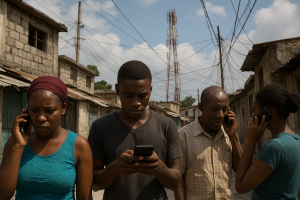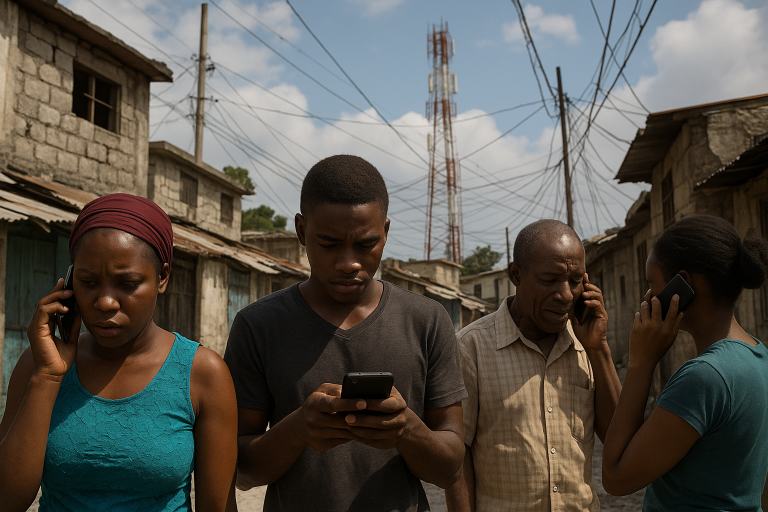Introduction: Piquing the Curiosity
Nestled in the Caribbean, Haiti is a land rich in history, culture, and resilience. As we explore this vibrant nation, curiosity naturally leads us to ponder the question: How does Haiti make money? Join us on a journey of discovery as we delve into the diverse economic tapestry that sustains Haiti and fuels its aspirations.
Beyond the Headlines
In a world often focused on Haiti’s challenges, it’s important to recognize the multifaceted nature of its economy. Beyond the headlines of adversity, Haiti’s economic story is a complex one, woven with threads of resilience, creativity, and a desire for progress. While the nation faces its share of difficulties, it’s equally crucial to highlight the positive aspects of its economic landscape.
Haiti’s history is one of perseverance in the face of challenges. Despite enduring hardships such as natural disasters and political instability, the nation’s economy continues to evolve. This resilience is a testament to the determination of the Haitian people to build a better future. Local businesses and entrepreneurs adapt and innovate to navigate these hurdles, creating a vibrant entrepreneurial spirit that propels the economy forward.
Small and medium enterprises (SMEs) form the backbone of Haiti’s economy. These enterprises span a diverse range of industries, from agriculture and crafts to technology and services. SMEs not only provide employment opportunities but also contribute to the local economy’s vitality. They reflect the resourcefulness of the Haitian people, who are finding ways to make a livelihood in a dynamic and ever-changing environment.
Agriculture and Self-Sufficiency
Haiti’s rich and fertile soil has long supported an agricultural heritage that sustains both its population and economy. The agricultural sector employs a significant portion of the workforce and plays a crucial role in ensuring food security and self-sufficiency.
The agricultural landscape of Haiti is adorned with a variety of crops, many of which have historical significance. Coffee, once a major export, tells a story of Haiti’s past economic prowess. Additionally, cocoa and mangoes continue to thrive, serving both domestic consumption and international trade. These crops not only contribute to revenue but also preserve the nation’s cultural identity.
While agriculture forms a cornerstone of the economy, it faces various challenges such as deforestation, soil erosion, and inadequate infrastructure. However, innovative approaches are emerging to address these issues. Sustainable farming practices, reforestation efforts, and initiatives that promote agroforestry are fostering a more environmentally conscious approach to agriculture, ensuring its viability for generations to come.
Tourism’s Potential
Haiti’s picturesque landscapes, historical sites, and vibrant culture have the potential to make it a sought-after tourist destination, thereby bolstering the economy and creating jobs.
From the stunning Citadelle Laferrière perched atop a mountain to the colorful streets of Jacmel, Haiti offers a unique blend of history and culture. These attractions, often hidden from the world’s view, have the capacity to draw curious travelers seeking authentic experiences.
Despite its allure, Haiti’s potential as a tourist destination is often overshadowed by misconceptions and negative perceptions perpetuated by media coverage. Overcoming these stereotypes is essential to showcasing the true beauty and hospitality that Haiti has to offer, encouraging visitors to explore its rich heritage and natural wonders.
Textiles and Garment Industry
Haiti’s proximity to major consumer markets, coupled with its focus on ethical and sustainable production, has led to the growth of its textiles and garment industry.
International companies have increasingly turned to Haiti as a location for garment manufacturing due to its proximity to North American markets and relatively lower labor costs. This industry not only generates revenue but also creates job opportunities for Haitians.
Haiti’s textile and garment industry emphasizes ethical practices and sustainability, a trend driven by consumer demand for responsible production. This focus aligns with the nation’s commitment to positive social and environmental impacts, making it an attractive partner for brands seeking ethical manufacturing solutions.
As we continue our exploration of Haiti’s economic landscape, these initial sections shed light on the resilience, creativity, and potential that define the nation’s financial journey. From agriculture and textiles to tourism’s promise, Haiti’s multifaceted approach to generating revenue reflects its determination to forge a path towards prosperity.
Remittances: A Lifeline
Haiti’s diaspora communities scattered around the globe play an integral role in the nation’s economic stability. Remittances, the financial support sent by Haitians living abroad to their families back home, serve as a lifeline for many households.
Remittances go beyond mere financial transactions; they represent a deep connection between Haitians living abroad and their loved ones in their homeland. These funds provide essential support for education, healthcare, and daily necessities, contributing to the well-being of families and communities.
Collectively, remittances constitute a significant portion of Haiti’s GDP. This consistent inflow of funds not only supports individual households but also contributes to the overall stability of the economy. The resilience and dedication of the Haitian diaspora in providing for their families underscore their enduring commitment to their homeland’s prosperity.
Mining Potential
Haiti’s untapped mineral resources hold the promise of economic development, but their responsible extraction and management present challenges that need careful consideration.
Haiti’s mountains are believed to hold valuable deposits of gold, copper, and other minerals. Unlocking these resources could provide a substantial boost to the economy, but the pursuit of responsible mining practices is essential to avoid negative environmental and social impacts.
Sustainable mining practices that prioritize environmental protection, community engagement, and fair distribution of benefits are crucial for realizing the potential of Haiti’s mineral wealth. Striking a balance between economic gain and ethical considerations is a complex yet necessary endeavor.
Embracing Innovation
In recent years, Haiti has embraced technology and innovation to foster economic growth and expand opportunities for its citizens.
The rise of mobile banking has brought financial services to previously underserved populations in Haiti. Mobile platforms provide a means for people to access banking services, make transactions, and even receive microloans, empowering individuals and small businesses.
The digital landscape offers a platform for Haitian entrepreneurs to reach a global market. E-commerce platforms enable local artisans and businesses to showcase their products to a broader audience, fostering economic growth and job creation.
Renewable Energy Ventures
Haiti’s commitment to renewable energy sources not only addresses energy scarcity but also creates opportunities for sustainable economic development.
Haiti’s reliance on imported fossil fuels for energy has spurred efforts to harness renewable sources like solar and wind power. These initiatives not only reduce carbon emissions but also provide an avenue for job creation in the green energy sector.
Investments in renewable energy infrastructure pave the way for greater energy access and stability. Improved energy infrastructure can drive economic growth by supporting industries, attracting investment, and creating employment opportunities.
International Partnerships
Collaboration with international organizations and donor countries has played a significant role in shaping Haiti’s economic landscape.
International partnerships have led to funding for various development projects in Haiti, ranging from infrastructure improvements to healthcare initiatives. These collaborations contribute to economic growth and enhance the quality of life for Haitians.
Support from international partners often extends to capacity-building and institutional strengthening. These efforts aim to empower local organizations, promote good governance, and create an environment conducive to sustainable economic development.
As we venture deeper into Haiti’s economic landscape, the sections above reveal the importance of remittances, the potential of responsible mining, the power of innovation, the promise of renewable energy, and the impact of international collaborations. Each aspect contributes to the complex tapestry of Haiti’s economic journey, highlighting the nation’s determination to forge a path towards progress and prosperity.












Add a comment